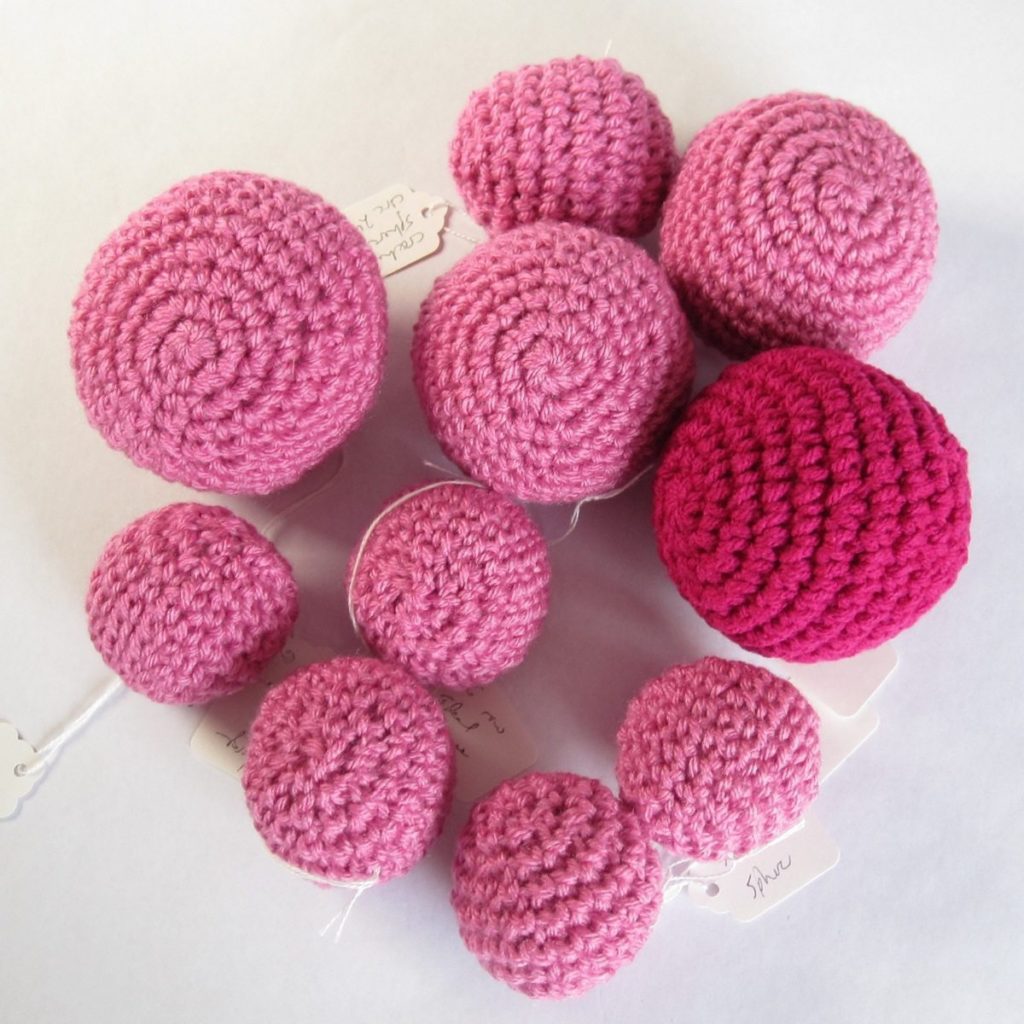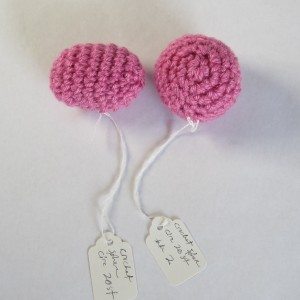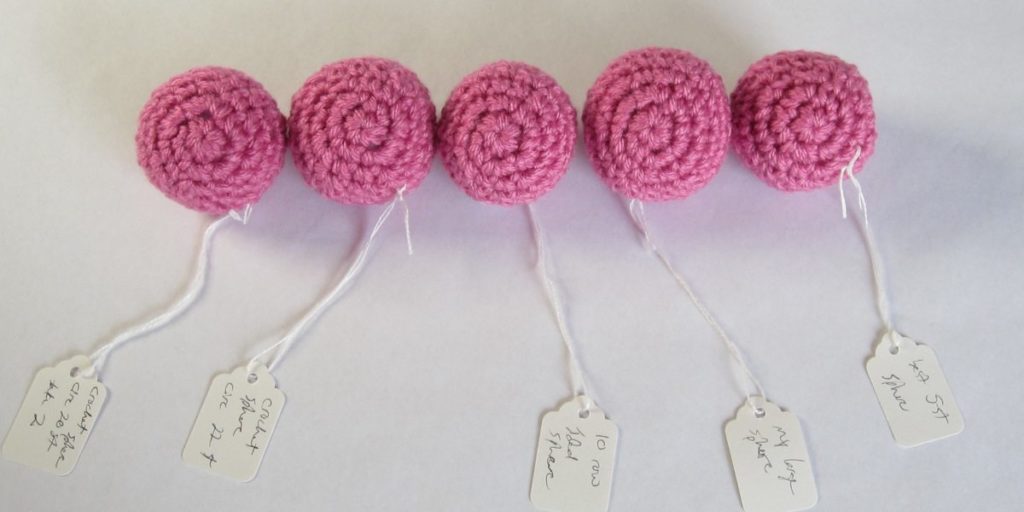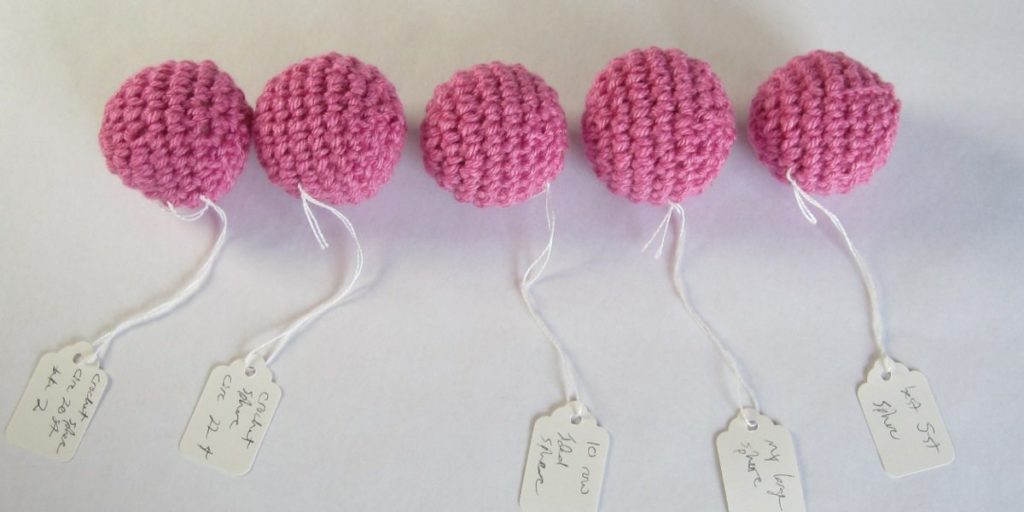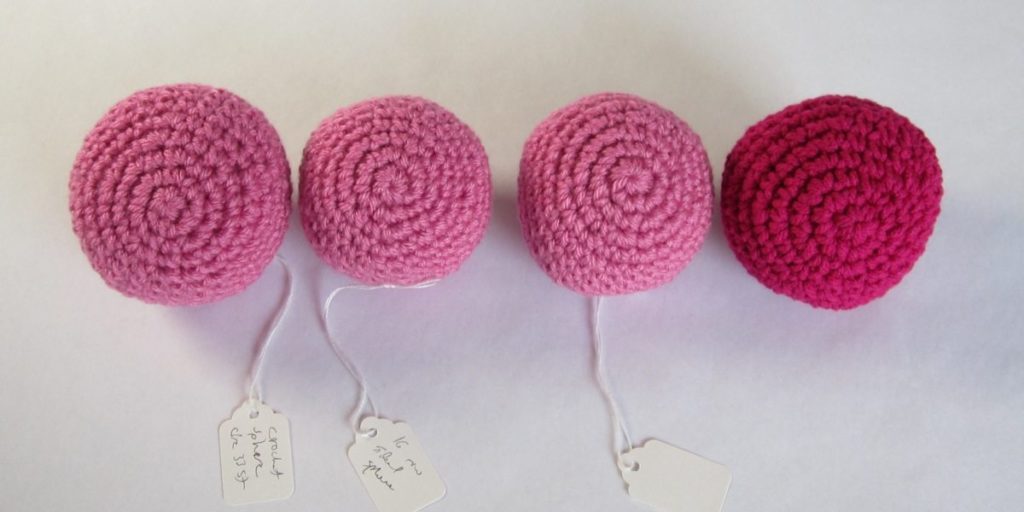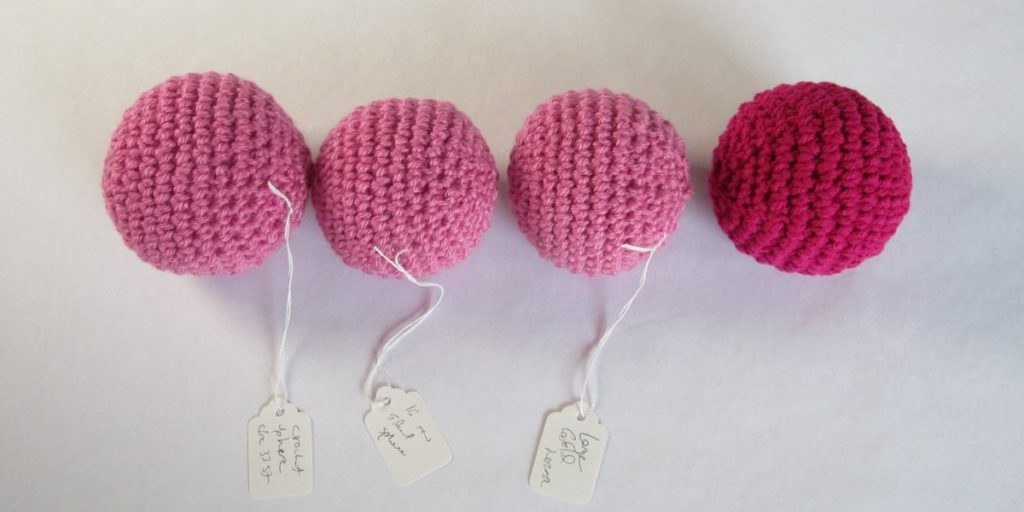For our second episode of Single Crochet Shaping I stitched a whole bunch of crochet spheres.
Here’s the punch line: stuffing matters more than stitching. At least after a point, of course. All of my spheres were pretty well spherical, and I think the lumps were due as much to my stuffing job as to the shaping.
Some stuffing differences were extremely obvious, as in the spheres above. Those were the same pattern, but the right-hand one is stuffed more fully than the left.
I used four design bases: two from sites that were trying to embed geometry and trigonometry into the design, and two very simple repetitive designs. Those latter two were to increase by either 6 stitches per round or 5, work even for some number of rounds, and then decrease by the same number of stitches as you increased. In both cases I made one adjustment for the larger sphere, which I’ll detail with their patterns, at the end of the post.
The first mathematical approach was the Crochet Sphere Calculator. Its method of calculating the stitch counts is not given, but you tell it the desired circumference in stitches and it gives you a pattern. It may or may not give you a pattern with the exact number of stitches at the largest point that you asked for, I found, but it tells you how to place the increases and decreases. Those placements frequently require significant paying attention to your counting, however. I had one quibble with it, which was that starting with 5 stitches (which is what it means, though it says 0) and then increasing in four and doing a double increase (3 in 1) in the fifth seems less desirable than starting with 6 and then increasing in 5 of them (making a single sc in the sixth). Likewise, but even more so, having a penultimate round of 11 stitches and then decreasing 4 pairs and a trio to get to 5 seems less desirable than decreasing 5 pairs to get to 6 (with or without a single sc in the remaining stitch). Triple decreases, even done by the invisible method, are clumsy and obvious.
The second mathematical approach was the Ideal Crochet Sphere. This is based on viewing each round as a latitude line and calculating its circumference from its angle to the “north pole.” There is a separate pdf with two larger spheres and a blog post with a form that calculates the pattern for a sphere of your desired size, though by telling you only the number of increases or decreases in the round. You must decide on their placement. However, you can certainly place them so that there is as much repetition in the counting as possible, to minimize the need for going back in your round and counting to remember what you’re doing next. The pre-made patterns are arranged to have as much repetition as possible without stacking increases and decreases on top of each other round to round.
Above, left to right: Sphere calculator 20-stitch circumference (this is the one shown in the stuffing picture above), sphere calculator 22-stitch circumference, 10-round ideal sphere, 6-increase sphere, 5-increase sphere (patterns for last two at bottom).
Above, left to right: Sphere calculator 33-stitch circumference, 16-round ideal sphere, 6-increase sphere, 5-increase sphere (patterns for last two below, again; last sphere in different yarn because I ran out).
You can see that they are all more or less equivalently spherical. I didn’t make any effort to offset my increases and decreases in the 5- and 6-increase spheres, and doing so would have made them smoother. The large 5-increase sphere is fairly lumpy, but you should have seen what it looked like before stuffing! A strawberry. It looked pretty much just like a strawberry (at least before too many decrease rounds).
My recommendation if you don’t want to have to work out, say, how many rounds to work even in a 6-increase sphere, is to use the Ideal Crochet Sphere. It gives good results with the least effort.
Patterns for my spheres after the cut… Continue reading Single Crochet Shaping 2: spheres
